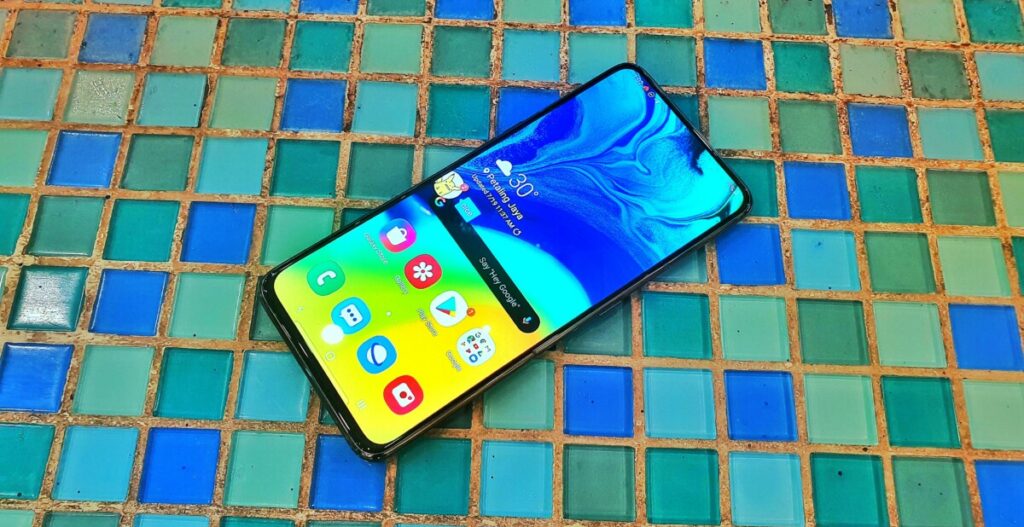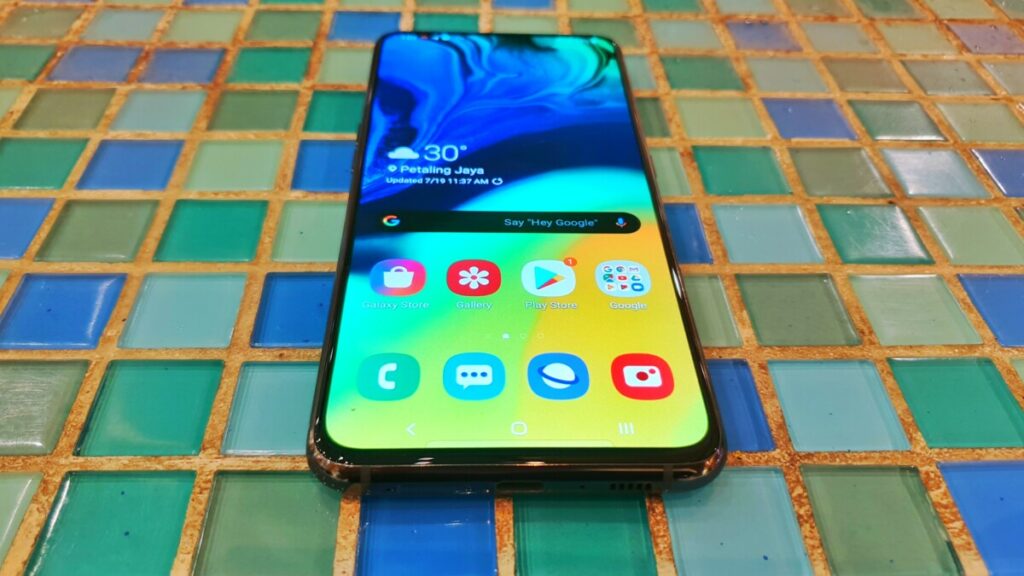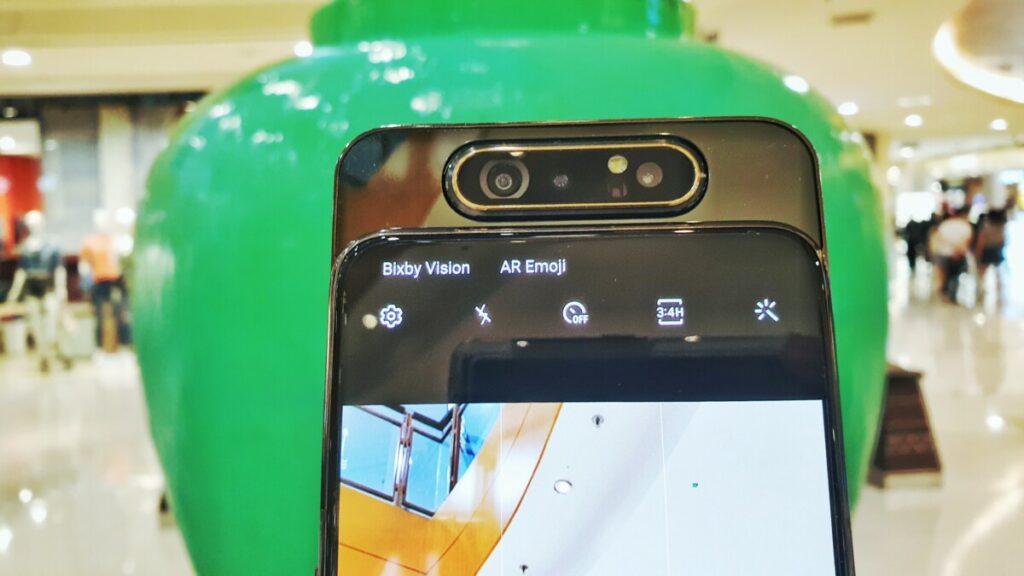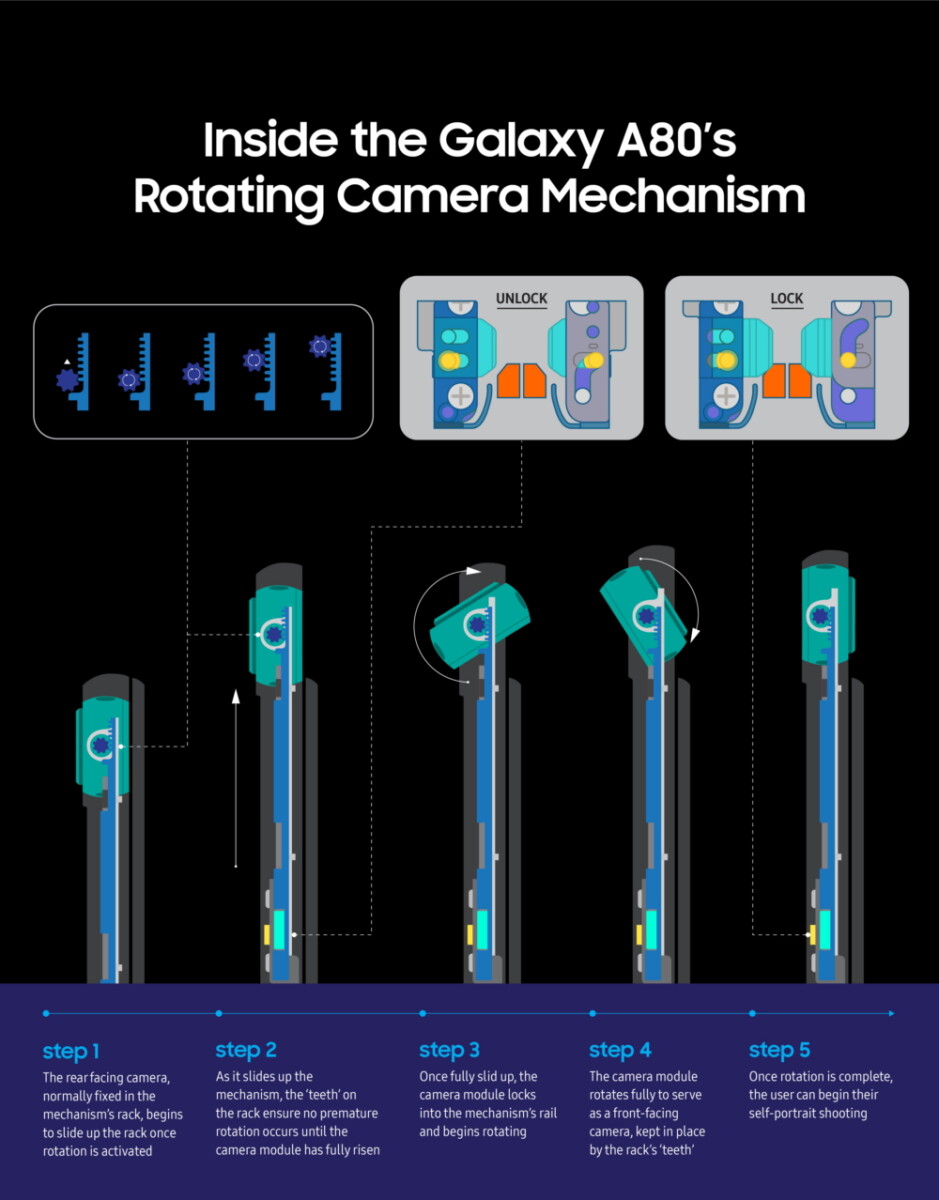
The slick tech behind Samsung Galaxy A80’s rotating camera explained
The Samsung Galaxy A80 is one of their first phones to sport a rotating camera mechanism that resolves one of the classic conundrums befalling smartphone manufacturers – getting a camera of equal quality for front and rear shots.
At first glance, the casual user would be nonplussed but based on Samsung’s latest reveal on how the mechanism works, it’s actually quite a feat of engineering indeed. While rotating camera phones do exist prior to this, they’re not particularly common due to the engineering challenges involved but the Galaxy A80 up’s this by a notch as the mechanism not only rotates but slides up which is the engineering equivalent of an ironman biathlon. How so? Read on, squire…
In most smartphones, manufacturers usually plunk a dedicated camera for both the front and the rear. While it would be nice to put an equally large selfie camera on the front as there is on the rear, which is usually the case in the vast majority of phones, limitations of space up front and in some cases cost usually limit options for smartphone engineers to front selfie cameras sporting smaller sizes sensors and hardware. The Galaxy A80’s rotating mechanism resolves this age-old conundrum as you have an equally powerful camera for both selfies and rear shots as needed without having to add in a dedicated camera module for either side of a phone.
According to conventional doctrine, a slide-up and rotating camera module would require two motors which would make it infeasible on account of the amount of space you’d need to house the mechanism and parts for two motors. The Galaxy A80 sidesteps that limitation entirely with a different solution.

Slip and Slide with the Galaxy A80 rotating camera
In the case of the Galaxy A80’s rotating camera, they came up with a mechanism so that no extra motor is needed for the rotation portion by integrating a set of rails, a hook and locking teeth to keep the camera in place in the intended position. It’s somewhat similar to a train on rails with brakes after a fashion with the train/ camera module guided into place on the teeth/rails and then locked into the right position with the ‘train’ being moved around with just one motor.

What this effectively gives you is a 48-MP primary camera paired up with a secondary ultra wide lens camera and a 3D depth camera for either the front or the rear as needed and a recent firmware update for the A80 has added autofocus when the camera is facing the front too which adds quite a bit to its capabilities.

When we tested it on a sample unit, the mechanism moved flawlessly, sliding silently up and down on its rails and smoothly locking into place every single time even after several dozen or so tries but we’ll give you the full once-over once we bring in a unit for field testing.
Currently, the Galaxy A80 is available for sale in Malaysia at RM2,499. Swing by Samsung Malaysia’s online portal here to check it out here. You can also check out their test video below. For more on the Galaxy A80 check out our introductory piece here.
https://www.youtube.com/watch?v=iULao8DZXtw
I
